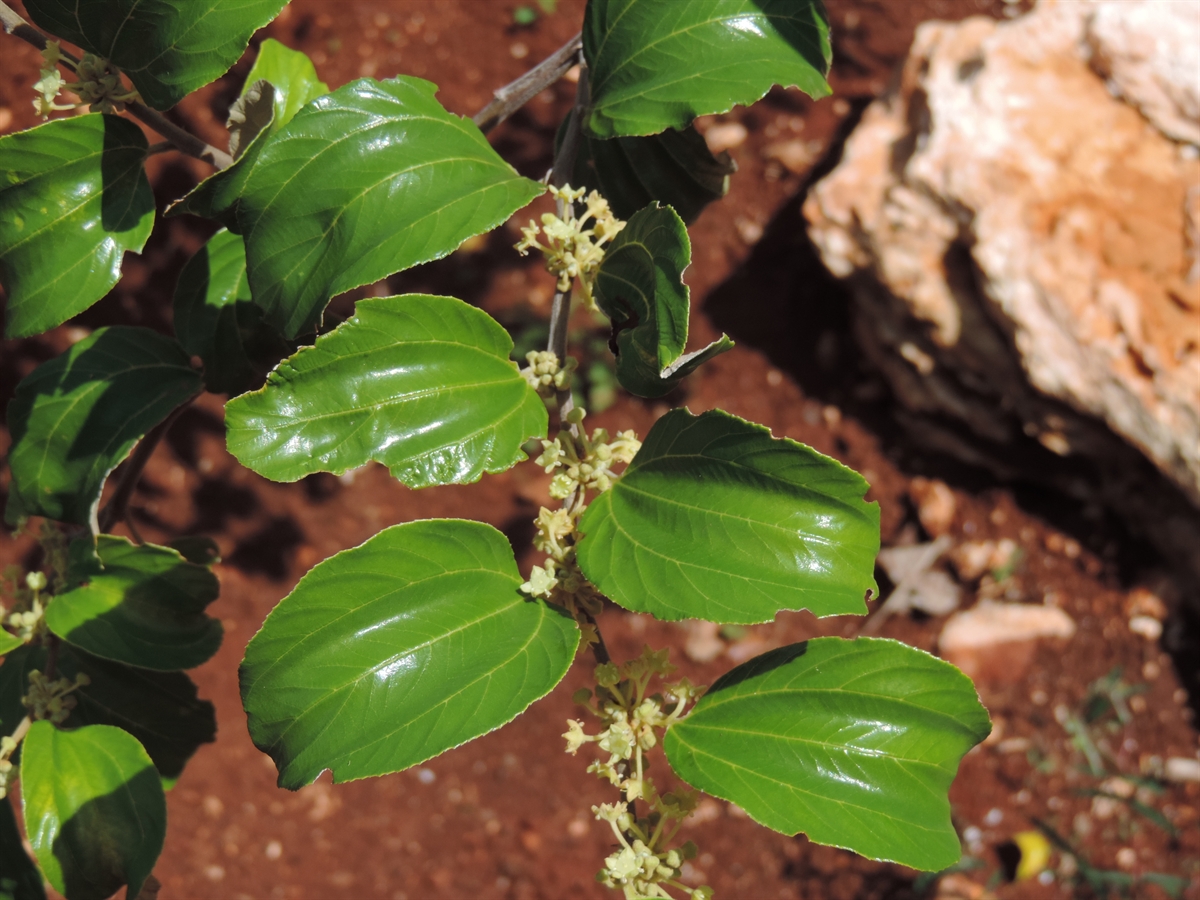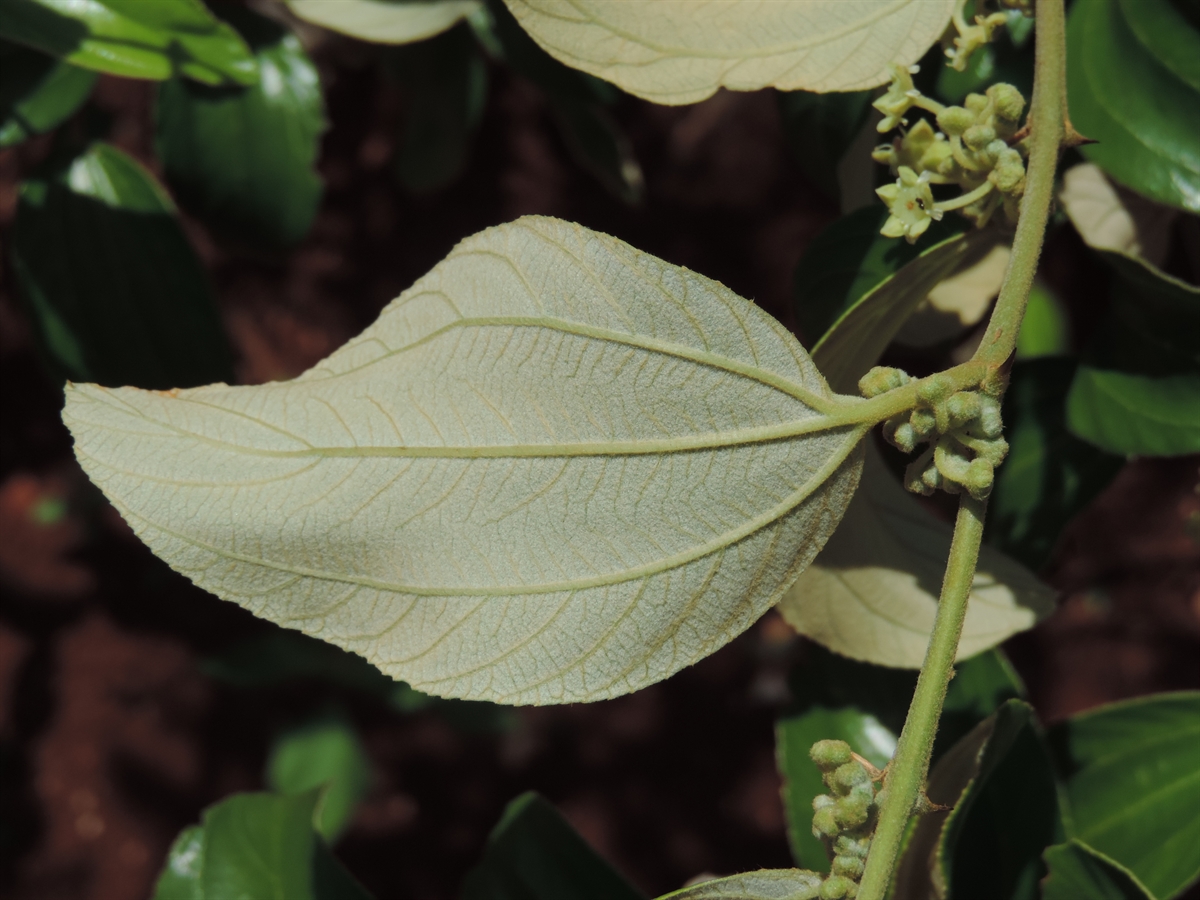Habit: Ziziphus jujuba grows as a glabrous shrub up to 6 m in height with young stems ridged/angled. There are axillary spines. The leaves are arranged alternately, to 10 cm in length, adaxial surface bright green, abaxial surface is white pubescent. The leaf shape is obovate with an emarginate to mucronate leaf apex and serrulate leaf margin.
The complete, perfect, actinomorphic, flowers are arranged in terminal clusters. The calyx has 5 yellow green, pubescent white fused at their base sepals. There are 5 yellow, unfused petals each incurved forming a hood. There are 5 stamens opposite the petals. The ovary is superior with 2 locules. Around the base of the ovary is a nectary disc. The fruit is a blue black drupe at maturity.
Habitat: Ziziphus jujuba grows in Human Altered environments (yards, fields, gardens). It is a weedy species and will grow in disturbed Dry Broadleaf Evergreen Formations – Forests/Shrublands (coppice).
Distribution: Ziziphus jujuba is NOT native to the Lucayan Archipelago. It is originally from China and is now spread throughout the world as a food crop.
Medicinal/Cultural/Economic usage: Ziziphus jujuba is not known to have been used medicinally in the Lucayan Archipelago.
The fruit is a sweet stone fruit which is eaten directly or turned into jams.


